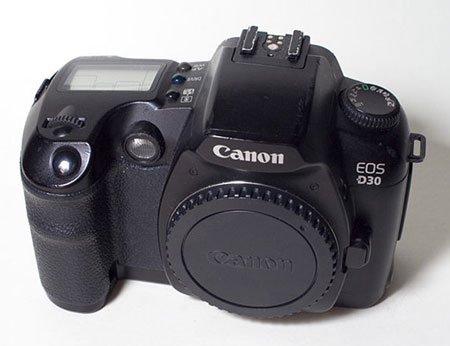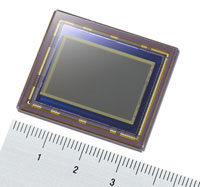The Digital Sensor: A Guide to Understanding Digital Cameras
by Wesley Fink on April 21, 2008 1:00 AM EST- Posted in
- Digital Camera
CCD and CMOS
At the dawn of the digital SLR era, almost every sensor was a CCD (Charge Coupled Device). CCDs were relatively easy to make, but they were and remain basically a single function sensor. CCD sensors create very high image quality and low noise, but they require support circuitry for almost every function provided by the CCD. The CMOS (Complementary Metal Oxide Semiconductor) sensor was always a possible alternative in sensor design, but manufacturing CMOS sensors was very difficult with the technology available at that time. CMOS sensors are inherently lower image quality and higher noise than CCD, which led some experts to predict that a production CMOS sensor for DSLR imaging would never be made.
There are many reasons manufacturers would have preferred the alternative of the CMOS sensor. While difficult to manufacture they are much cheaper to make in volume than CCD sensors. Power consumption for CMOS is inherently lower than the CCD sensor. In addition, the CMOS sensor lends itself to integrating other electronics, such as the analog to digital conversion and noise reduction electronics into the sensor itself - something not really possible with the CCD design.

Those who did not think a commercial CMOS sensor was possible were silenced with the introduction of the $3000 Canon D30 in the fall of 2000. Canon has championed the CMOS sensor, almost exclusively, since that time. However, in the past year other sensor manufacturers have been able to produce their own CMOS sensors. As a result, almost every new sensor introduction in recent months has been CMOS.

In fact, Sony was the first to market with a 12MP+ APS C size CMOS sensor, used in the Nikon D300 and Sony A700. This was followed in about 6 months by the introduction of the Samsung 14.6MP APS-C CMOS sensor in the Pentax K20D. It appears other sensor makers who previously trailed Canon in CMOS development are now the ones pushing the envelope in CMOS sensor development. Sony has also announced a 24.81 effective megapixel CMOS sensor that will be used in a full-frame Sony later this year that will likely be called the A900. The Sony and Samsung thrust into CMOS sensors makes more sense when you realize that Sony and Samsung jointly own several recent patents in CMOS technology. Panasonic is also producing CMOS sensors as seen in their LiveMOS sensors used in the Olympus E-3 and E-501/410/420.

LEFT: Conventional Image CMOS Image Sensor Circuit Structure
RIGHT: Column-Parallel A/D Converter CMOS Image Sensor Circuit Structure
Sony has also taken advantage of another CMOS capability by combining analog to digital conversion and image noise reduction on the CMOS sensor itself in the 12.2MP A700. Some photo review sites had apoplectic fits when they realized Sony was doing noise reduction on the A700 chip, but this is an inevitable development. This move to larger integration of electronics into the CMOS sensor module is just starting, and it could eventually lead to a much larger scale integration of digital image processing functions into the sensor chip - or even a camera on a chip.










72 Comments
View All Comments
teng029 - Tuesday, April 22, 2008 - link
the rebel xti uses a cmos sensor.http://www.usa.canon.com/consumer/controller?act=M...">http://www.usa.canon.com/consumer/contr...&fca...
melgross - Monday, April 21, 2008 - link
Since when did the XTi use a CCD?